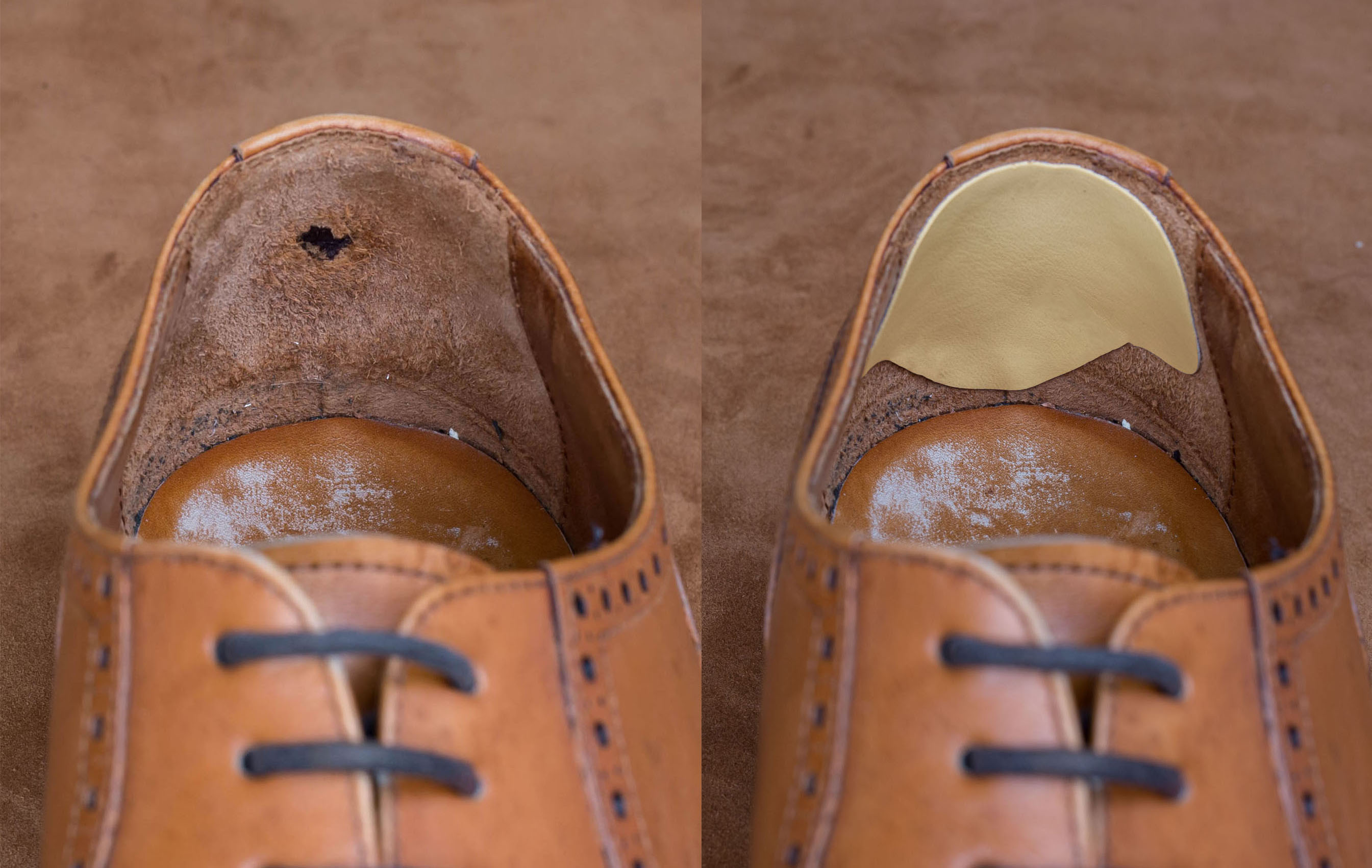
Have you got holes in your shoes? Or is the lining of the heel worn down? Our self-adhesive repair patches for shoes are the solution, with these you can easily fix minor repairs to your shoes, so you don't have to throw them away and can keep using them. Here we go through how you can repair various holes on shoes and boots.
These patches for shoes are made of a durable textile or synthetic leather, with an adhesive backing. Available in several different sizes and varieties, and many different colours, especially the sheets where you cut the patches yourself, we have many different shades.
All our varieties of shoe patches.
For shoes with a fabric lining we recommend using a textile patch, and for shoes with a leather lining we recommend the synthetic leather patches. However, it is possible to use textile patches on leather, or vice versa, for example if you want to get the colour more right or for some other reason. Note that there's not really any up or down on the patches, place them whichever suits the shoes best, and cut with a pair of scissors if needed.
You can find all our different types of repair patches for shoes here.
Repair worn down heel lining
To wear out the lining at the back of the heel is in many cases the first thing that breaks on a pair of shoes. Not least on running shoes it's very common that you wear them down at the heel. Many continue to wear them that way, even though they may be more uncomfortable and sometimes even rub against the hard heel stiffener, while some throw the shoes away immediately when this happens. Neither of these options is particularly positive.
Broken heel lining, very common.
Attach a repair patch on them instead and the shoes will have a second life. Most people find that they feel like new again, the durable materials last a long time, and once the patch is worn out you can remove it and put a new one back on.
Make sure the surface you're attaching the patch to is clean and any loose threads or similar are cut away. First test fitting the patch without pulling off the adhesive cover, so you know the best way to attach it. If you're using the sheet where you're going to cut out the shape yourself, you can first make a template out of plain paper and cut it out to make sure you get things right.
The patches have a self-adhesive surface on the back. To repair for example running shoes with holes in the heels is very easy with these shoe repair patches.
Then peel off the cover of the adhesive and press the patch firmly into place, making sure that the edges are fully attached. You can start using the shoes straight away, but it's best to leave them for a few hours before use so that the adhesive really sticks, and you can press the patch again a few times if necessary.
Also remember that it's recommended to use shoehorns when putting on the shoes, otherwise you risk rolling up the top edge of the patch. If this happens, you can reattach the patch with leather glue.
A neat and tidy repair.
Before and after repairing the heel lining of a welted shoe.
Repairing holes in the upper of a shoe
Sometimes a small hole in the upper of a shoe has been accidentally torn open, or an older leather shoe has cracked in one of the creases. Holes in fabric shoes are usually easy to fix in a good way with these repair patches, especially if it's in a place where the shoe doesn't flex too much. If there's a crack in leather, a patch can work fine, but it's a bit more tricky depending on how big the crack is, where it's located and so on. Usually worth trying anyway, if the alternative is to discard the shoes.
Here, a hole has been torn open in the upper.
Make sure the surface you're attaching the patch to is clean, and press it in place firmly. For smaller holes in the upper, attach a patch to the inside of the shoe. For larger holes, we recommend using a colour that matches the shade of the shoe, and attaching a smaller patch with the adhesive surface against the adhesive surface of a larger patch, which you then attach to the inside. The smaller patch is then facing outwards, and the repair is as inconspicuous as possible.
Clearly better after a shoe patch is attached to the inside.
If there is a larger hole in the shoe, you can put a smaller patch against a larger one, which you then attach to the inside. Be sure to choose as similar a shade as possible for the neatest result.
Below a film showcasing the repairs:
Here you can find all our different types of repair patches for shoes.
